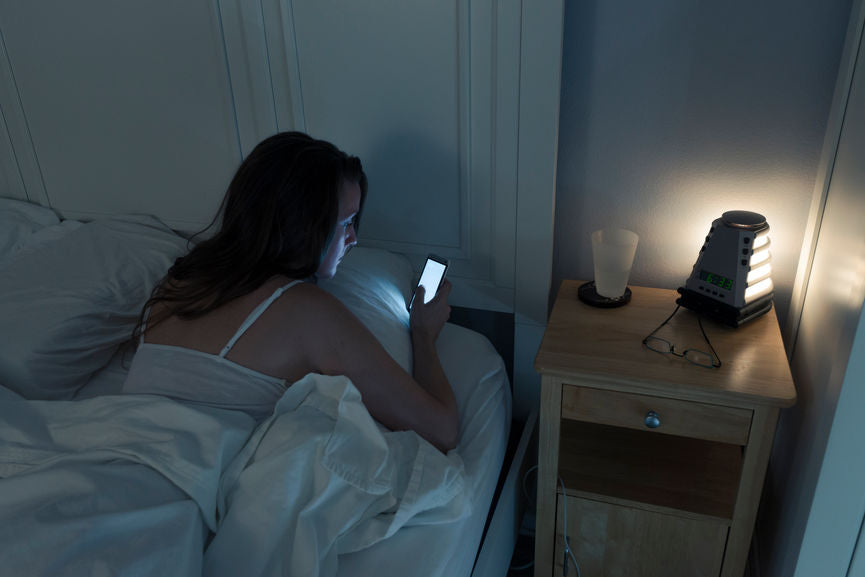Shopping for a memory foam or gel mattress can be a daunting process – even after you’ve committed to not springing for springs. The wide availability of tightly rolled bed-in-a-box options can make selection more difficult, as many companies drop the names of dozens of fillers and foams that may sound unfamiliar to the average consumer, and offer little in the way of explanation. So what do you need to know before kicking back in the bed of your dreams?
What is memory foam?
Memory foam was developed in 1966 by NASA to improve the safety and comfort of aircraft cushions. To create it, conventional polyurethane foam is treated with chemicals to increase viscosity and elasticity. This inflated foam then gently contours in response to weight, and slowly returns to its original state once pressure is relieved. In other words, memory foam cradles your body evenly at every point of rest.
NASA open-sourced the science of memory foam in the 80s, and medical professionals were quick to see the potential. Soon they discovered that memory foam can alleviate the blood flow restrictions of bedridden patients, and can support people frustrated by chronic back and neck pain or injuries. Other sleep researchers, like Donna L. Arand, PhD noticed the positive impact on restless sleepers, thanks to foam’s promotion of quiet sleep and minimal movement. This raised questions about whether memory foam could provide relief to people with other chronic sleep issues exacerbated uncomfortable spring mattresses.
Mattress companies saw the potential, and Tempur-pedic emerged as an early industry leader, marketing heavily to physical therapists and chiropractors. The company offered firm memory foam mattresses and support pillows at luxury prices that were out of reach for many consumers. Modern bed-in-a-box and mail order options soon followed, which brings us to the affordable memory foam mattresses we know today.
So what’s the downside?
Heat is necessary for memory foam to work. Body heat softens the dense foam, and then the body sinks gently into place. The downside is that memory foam also retains this heat. Individuals with pain issues responsive to warmth usually consider this aspect of memory foam a bonus, as their injury is both comforted and treated. However, people in warm climates, or with a tendency to sleep hot sometimes struggle to get comfortable.
Many mattress companies have explored solutions to this issue, including open cell structure designs that encourage better air movement, and transfer heat away from the body. Other companies have also added breathable wool or cotton fabric toppers, to wick away excess moisture and minimize heat response. Moisture wicking also discourages mold, especially when paired with waterproof mattress covers.
The other downside to memory foam is the release of Volatile Organic Compounds (VOCs) and off gassing. Memory foam mattresses usually contain 65 different chemicals, 18 of which have had adverse health effects reported. Most mattress companies suggest a 24-hour air-out time prior to putting sheets on the bed, to minimize direct inhalation during the peak off-gassing stage. To address concerns about chemical odors and potential toxicity, mattress companies have begun incorporating plant-based memory foam, and/or plant-based fire retardants that meet safety standards but don’t compromise health.
Gel: the evolution of memory foam.
Gel is the next frontier of memory foam mattresses, working to address the identified shortcomings of older models. Gel particles are fused with visco foam to absorb and release trapped heat. This fusion also increases the density of the mattress, and can prolong its life. To address odor issues, some gel mattresses include elements such as green tea extract, activated charcoal, and aloe Vera. Gel memory foam has also ushered in the era of the hybrid mattress, where gel, memory foam, latex, plant-based memory foam, and encased coils work collaboratively to provide optimal sleep comfort and health.
Both memory foam and gel memory foam mattresses provide excellent support to aching limbs, and relief from chronic pain. Testing these mattresses at a retail outlet with help narrow your search, and identify strengths and weaknesses of both varieties. With some basic definitions and understanding of design, selecting a memory foam mattress can smoothly transition from nightmare to dream.
